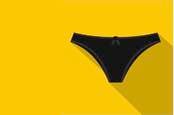This article is more than 1 year old
Blame of thrones: Those viral vids of PC monitors going blank when people stand up? Static electricity from chairs
El Reg speaks to ex-AT&T boffin who previously probed weird effect
Video Netizens this week rediscovered and documented in viral videos an electrical interference problem known to researchers for years: standing up from your chair can cause your PC monitors to blank.
On Wednesday, The Register confirmed the nature of this weird phenomenon: our office seats trigger an electrostatic discharge (ESD) capable of disrupting electronic devices.
Roy van Rijn, a software developer in the Netherlands, noted on Twitter a couple of days ago that one of the chairs in his office can turn off nearby monitors, and documented the brief screen blackouts in a video accompanying his tweet. The footage shows an office worker standing up, which turns off a nearby monitor.
The ensuing discussion thread is filled with other folks claiming to have experienced the same phenomenon, along with supporting video...
It's a known issue for Dell, van Rijn observed, pointing to the monitor manufacturer's support documentation on the phenomenon.
"When people stand or sit on gas lift chairs, they can generate an EMI (electro-magnetic interference) spike which is picked up on the video cables, causing a loss of sync," Dell's DisplayLink support site explains. "If you have users complaining about displays randomly flickering it could actually be connected to people sitting on gas lift chairs."
Dell points to a 1993 paper [PDF] by Doug Smith, who was with AT&T Labs at the time, that explores how ESD can be caused by chair cushions.
"[ESD] causes a lot of problems," said Smith, now an independent consultant, in a phone interview with The Register. "I've seen it take down air traffic control equipment."
Smith said that it is the inside of the chair cushion that generates the electrical charge, in conjunction with pieces of metal that are close but not quite touching. That could involve chair components such as bolts, the chair frame, or a gas cylinder, he explained.
You've got to be shitting me...
— Roy van Rijn (@royvanrijn) January 6, 2020
One of our office chairs turns off monitors... we couldn't believe it, but we have it on tape.
Surprisingly, there even is a known issue for it:https://t.co/d3NKIPiyXh pic.twitter.com/E57ApzR0Mi
It's possible to buy chairs that purport to reduce the static charge generated by sitting, though Smith expressed skepticism about them. "They don't necessarily work," he said.
His paper says as much, stating that normal methods of ESD control, such as wearing wrist straps and using special floor finishes, fail to diminish the cushion effect, and that the phenomenon has been observed in about one third of chairs tested, including an "ESD-safe" chair.
Smith said he has tried to get a standards body to develop a formal way to test office furniture for ESD potential but no one seems to be interested in doing so. His 1993 paper also argued for the creation of such standards.
Alternately, makers of electronic equipment can design their gear so that it's shielded from environmental effects, Smith said. Electrical engineers have described approaches for doing so over the years, and Smith believes there's a reasonable approach. For DisplayLink monitors, Dell claims that video cables with magnetic ferrite ring can eliminate ESD concerns.
Smith acknowledged that defensive electronics design has made a difference, pointing to European regulations back in the 1990s that reduced ESD. While equipment standards set by civil aviation watchdogs address the problem, he said, the issue is still present in a lot of older gear that's likely to be around for many years to come.
He recounted being in a major airport, which he would not name, around 2am and witnessing the effect take down air traffic control gear. At a busier time, he said, the effect could have been catastrophic.
For those interested in evaluating a chair without an oscilloscope, Smith advised taking an AM radio, tuning it to static, and placing it under the chair in question. If sitting on the chair's cushion (or standing up) generates ESD, the radio may capture the signal as an audible crackle or pop. ®

